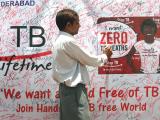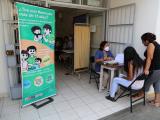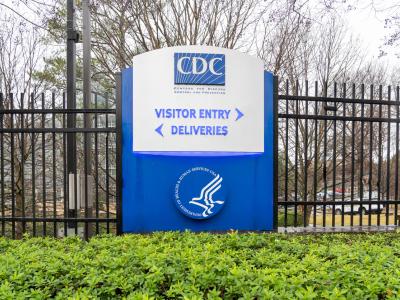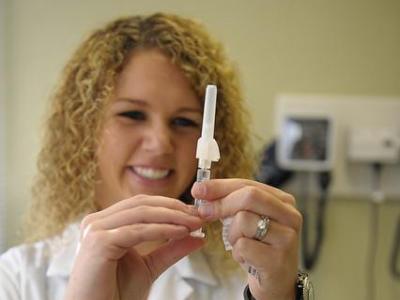More than 80% of people in Asia and Africa who have culture-confirmed pulmonary tuberculosis (TB) don't have one of the symptoms most commonly associated with the disease, according to a study published yesterday in The Lancet Infectious Diseases.
The study by an international team of scientists, which aimed to explore the prevalence of subclinical pulmonary TB, found that more than 80% of TB patients in 12 high-burden countries in Asia and Africa did not have a persistent cough, while more than 60% had no cough at all. More than a quarter had no other symptoms associated with the disease.
The lack of a persistent cough is significant because it's one of the primary symptoms that triggers the diagnostic process for TB in HIV-negative patients. That means patients not reporting a persistent cough could face delays in diagnosis and treatment of a disease that killed 1.3 million people in 2022. TB is the second-leading cause of death from a single infectious agent, after COVID-19.
The findings could help explain why there's such a significant gap each year between the number of new TB cases reported globally (7.5 million in 2022) and the estimated number of people who develop the disease (10.6 million in 2022).
"A persistent cough is often the entry point for a diagnosis, but if 80% of those with TB don't have one, then it means that a diagnosis will happen later, possibly after the infection has already been transmitted to many others, or not at all," corresponding study author Frank Cobelens, MD, PhD, a professor of global health at Amsterdam University Medical Center, said in a press release from his institution.
Subclinical TB could be major source of transmission
To estimate the prevalence of subclinical pulmonary TB, a term that's been introduced to capture people with TB pathology who do not report clinically recognizable symptoms, Cobelens and colleagues from the scTB Meta Investigator Group analyzed national TB prevalence surveys conducted in 12 countries (8 in Africa and 4 in Asia) with the World Health Organization (WHO) from 2007 through 2019. The prevalence of TB was based on chest x-ray and symptom screening in participants aged 15 and older, and TB was defined by positive Mycobacterium tuberculosis sputum culture.
The researchers used three case definitions for subclinical pulmonary TB: no persistent cough (2 weeks or more), no cough at all, and no symptoms (such as cough, chest pain, fever, night sweats, and weight loss).
Individual participant data were available for 602,863 participants, of whom 1,944 had culture-confirmed TB. After adjusting for incomplete sensitivity of x-ray screenings and missed or contaminated cultures, the proportions of subclinical TB were 82.8% (95% confidence interval [CI], 78.6% to 86.6%) for no persistent cough and 62.5% (95% CI, 56.6% to 68.7%) for no cough at all. In a subset of four surveys that contained information on symptoms other than cough, the adjusted proportion of TB patients with no symptoms was 27.7% (95% CI, 21.0% to 36.4%).
Higher average proportions of TB with no persistent cough or no cough at all were found among women, younger participants, and urban residents.
Among smear-positive TB patients, who are more contagious than those with smear-negative results, 29.1% (95% CI, 25.2% to 33.3%) had no persistent cough, and 23.1% (95% CI, 18.8% to 27.4%) had no cough at all.
"Subclinical tuberculosis could therefore be a major source of transmission globally, and delayed or missed diagnoses associated with it could have contributed to the less than anticipated effect of tuberculosis control efforts on global tuberculosis incidence over the past decades," the study authors wrote.
New approach needed
Cobelens said the findings indicate a need to rethink TB-identification strategies and scale up enhanced case-finding approaches like chest x-ray screening.
"It's clear that current practice, especially in the most resource-poor settings will miss large numbers of patients with TB," he said in the release. "We should instead focus on X-ray screening and the development of new inexpensive and easy-to-use tests."
In a commentary that accompanies the study, TB experts Xiaolin Wei, MD, MPH, PhD, of the University of Toronto and Wenhong Zhang, MD, PhD, of Fudan University in Shanghai say the findings call for revisiting the definition of TB-suggestive symptoms that warrant clinical investigation. They suggest, for example, that persistent cough could be replaced by any cough, fever, weight loss, night sweats, or chest pain.
Innovative technologies like mobile vans, computer-aided radiology, and rapid molecular tests could also bolster active case-finding initiatives and help identify more subclinical TB patients, they say.
"Subclinical tuberculosis hides a higher prevalence of tuberculosis and poses an imminent challenge to WHO's target of ending tuberculosis by 2035," they wrote. "Subclinical tuberculosis therefore requires further studies in microbiology, public health, and clinical care to optimise policies in its diagnosis, treatment, and management."



















